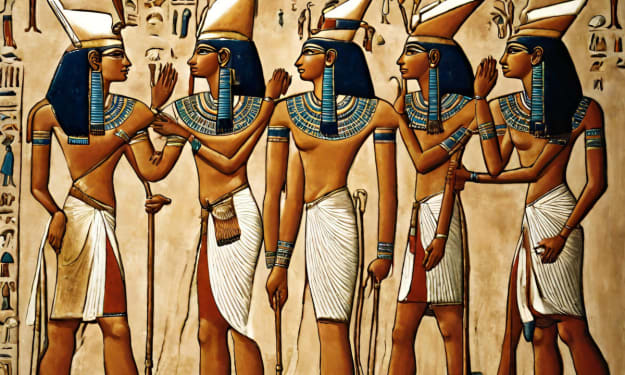How Many Wives Did Prophet Muhammad Saw Have?
Exploring the Prophet's Marital Life

The life of Prophet Muhammad (peace be upon him) is a source of inspiration for millions of people worldwide. One aspect of his life that often sparks curiosity is his marital life. In this comprehensive article, we will explore the question, "how many wives did Prophet Muhammad saw have," and provide an in-depth look at his marriages, shedding light on the historical context and the wisdom behind each union.
Who is Muhammad Saw?
Muhammad, often referred to as Muhammad (peace be upon him) or Prophet Muhammad, is a central figure in Islam and is considered the last prophet of Islam. He was born in Mecca, in present-day Saudi Arabia, around the year 570 CE. Muslims believe that Muhammad received revelations from Allah (God) through the angel Gabriel over a period of 23 years, and these revelations were later compiled into the Quran, the holy book of Islam.
Muhammad is revered by Muslims as the "Seal of the Prophets," signifying that he is the final prophet in a long line of messengers sent by God to guide humanity. His teachings and actions, recorded in Hadiths (collections of his sayings and actions), serve as a model for how Muslims should lead their lives. Muhammad's life and teachings cover a wide range of topics, including spirituality, morality, social justice, and governance.
His message emphasized monotheism, the importance of worshiping one God, and the importance of compassion, charity, and justice. Muhammad's migration from Mecca to Medina, known as the Hijra, marks the beginning of the Islamic lunar calendar and holds historical and religious significance in Islam.
Marriages & Wives of Muhammad
According to Islamic tradition, the Prophet Muhammad (peace be upon him) had 12 wives.
Khadija bint Khuwaylid:
Khadija was the first wife of Prophet Muhammad and a prominent figure in his life. She was a wealthy merchant and a widow when she proposed marriage to Muhammad. Their union was marked by deep love, support, and trust. Khadija bore him four daughters and two sons, and their marriage lasted for 25 years until her passing.
Sawda bint Zama:
Sawda was the first woman the Prophet married after Khadija's death. She was a widow, and their marriage was a compassionate gesture to support her. Sawda was known for her piety and humility.
Aisha bint Abu Bakr:
Aisha, the daughter of Abu Bakr, one of Muhammad's closest companions, became his wife at a young age. She played a significant role in early Islamic history and is known for narrating many Hadiths, making her an important figure in Islamic scholarship.
Hafsa bint Umar:
Hafsa was the daughter of Umar ibn Khattab, the second Caliph of Islam. Her marriage to the Prophet strengthened ties with Umar and is seen as a political alliance within the Muslim community.
Zaynab bint Khuzaymah:
Zaynab, often called "Umm al-Masakin" (Mother of the Poor), was known for her kindness and generosity. Her marriage to the Prophet showcased his commitment to social justice and helping those in need.
Hind bint Abi Umayya (Umm Salama):
Umm Salama was widowed twice before marrying the Prophet. Her marriage brought comfort and solace to her life, and she became known for her wisdom and counsel.
Zaynab bint Jahsh:
Zaynab's marriage to the Prophet was a unique event in Islamic history. She was previously married to Zaid ibn Haritha, who was the Prophet's adopted son. Their marriage after her divorce highlighted the dissolution of adopted filial ties in Islam.
Juwayriyya bint al-Harith:
Juwayriyya was a captive from a war and was subsequently freed and married by the Prophet. Her marriage was significant in demonstrating the importance of compassion and justice towards captives.
Ramla bint Abi Sufyan (Umm Habiba):
Umm Habiba was one of the early converts to Islam and faced persecution in her tribe. She married the Prophet while in exile in Abyssinia (modern-day Ethiopia), and her marriage showed the global reach of Islam.
Maymuna bint al-Harith:
Maymuna was the last woman the Prophet married. Their marriage took place during the farewell pilgrimage, and it is considered a symbol of the universality and inclusivity of Islam.
Safiyya bint Huyayy:
Safiyya was also a captive from a war, and her marriage to the Prophet exemplified his commitment to treating captives with respect and dignity.
Rayhana bint Zayd:
Rayhana was a Jewish woman from the city of Medina who married the Prophet. Her marriage signified the importance of peaceful coexistence between different religious communities in Medina.
Maria al-Qibtiyya:
Maria was a Coptic Christian slave who was gifted to the Prophet. Their relationship resulted in the birth of a son named Ibrahim.
Conclusion!
In total, Prophet Muhammad saw had twelves wives during his lifetime. These marriages were not driven by personal desires but held significant social, political, and humanitarian purposes. They served as examples of compassion, support for widows, and fostering unity within the Muslim community.
About the Creator
Exotic History
Welcome to Exotic History, where the past comes alive with vibrant stories and intriguing narratives. We are your gateway to a world of captivating historical accounts, adventures, and forgotten tales that span the globe.






Comments
There are no comments for this story
Be the first to respond and start the conversation.